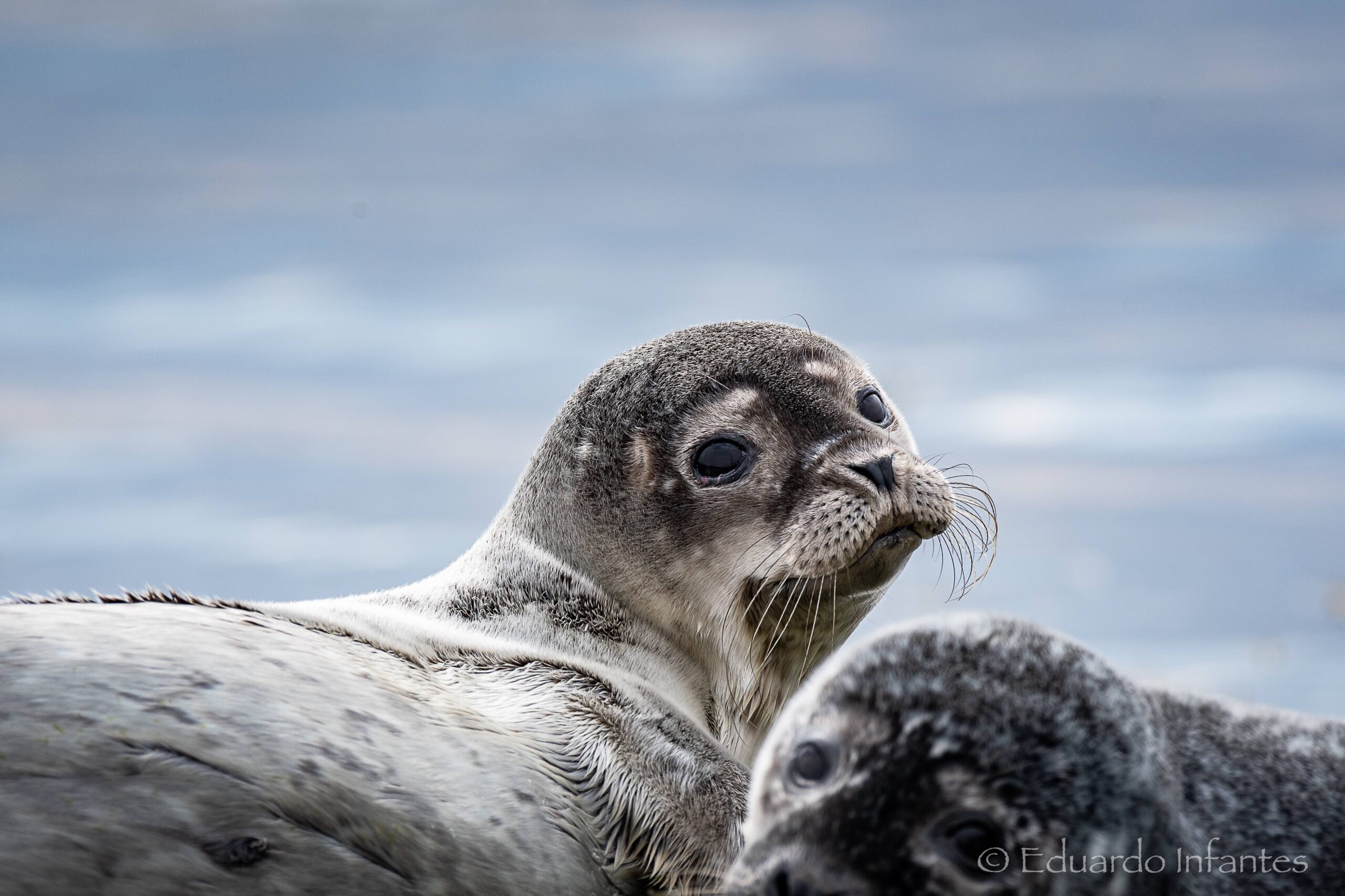The Harbor seal (Phoca vitulina), also known as the common seal, is a marine mammal species that is found in coastal waters of the northern hemisphere, including the Atlantic and Pacific Oceans. They have a distinctive appearance, with their spotted coats, short faces, and rounded flippers. They are opportunistic feeders and feed on a variety of prey, including fish, squid, and crustaceans. They are relatively solitary animals and are most commonly seen basking on rocks, sandbars, and beaches. However, during the breeding season, the mothers utilize islands and skerries as birthing and nursing grounds for their newborn pups. This time of year presents an ideal opportunity for scientific surveys to assess and document the status of the new pups.
Harbor seals are adapted to life in the water and are excellent swimmers, able to dive to great depths and stay underwater for long periods of time. However, the young pups need to stay on land and feed on their mothers milk for at least three weeks. During this period it is prohibited to enter the seal sanctuaries without special permit since disturbance by humans forcing the seals into the water cause stress and increase the mortality of the young pups.
They are also known for their vocalizations, which include barks, growls, and whistles. Their populations have been impacted by human activities, such as hunting, habitat degradation, and pollution. Conservation efforts aim to protect and conserve harbor seal populations and their habitats.
In this post, I share some images from harbor seals in Kosterhavet National Park in the west coast of Sweden. I have been extremely lucky to participate in several expeditions to carry surveys on harbour seal pups, where we have used drones, telescopes and machine learning to count and measure seals pups and adults.
During the seal breeding season (June-July), visitors are NOT allowed in the area to avoid disturbing the sanctuary, where seals can become very stressed with humans. We had special permits issued to be in the area to carry scientific research. Please, contact the Kosterhavet National Park about the best time of the year to visit the harbor seals.

Motherly comfort. A peaceful slumber overtakes a harbor seal pup as it dozes off in front of its mother, both situated on a rocky outcropping called a “skerry.”

Wave shelter. A group of harbor seals finds respite on the inner, drier islands that offer protection from the relentless waves, water spray, and ocean swell of the sea.

Drone’s eye view. An aerial orthomosaic of harbor seals in Kosterhavet National Park. This image was composed by stitching together roughly 30 individual photos taken with a drone.

Avian vs. aquatic: Mother eider challenges harbor seal. A mother eider duck (Somateria mollissima) tries to drive a harbor seal and her pup away from a rock to make space for her youngsters, but the seal remains unfazed. Eventually, the duck family and the seals come to a peaceful agreement, sharing the rock together.

Nurturing bond: Mother seal feeds pup on a secure rock. A mother harbor seal provides nourishment to her pup on a secure rock, sheltered from the rough waves and harsh winds of the sea.

Post-meal bliss. After a meal, a young harbor seal finds rest and slumber, taking a peaceful nap.

Rocky retreat. A harbor seal pup relaxes comfortably on a small rocky outcropping (skerry).

Seaside siesta. A harbor seal pup takes a nap in a protected skerry near the rolling ocean waves.

Balancing survival: Mother seal’s quest for food and pup’s safety. A harbor seal pup awaits its mother’s return, ready to continue nursing. The mother must venture out to find food to feed herself, but during this time, she runs the risk of losing track of her precious pup.

First water adventure. A harbor seal pup takes its first steps into the water, approaching us with the curiosity of a little child but guided and protected by its mother as it learns to swim.
For the newborn seal pups...
Born in the skerry’s embrace,
a tiny harbor seal pup with grace.
Nursed by mother, strong and bold,
her milk sustains as they grow old.
The pup learns to swim and play,
exploring the sea in a new way.
With each passing day, they grow,
their confidence in the water aglow.
They dive and splash, and spin around,
their movements graceful, never unbound.
The mother watches, always near,
her love for her pup, always sincere.
The sea can be a harsh place,
but the pup is learning the secrets to survive in this space.
With each passing day, they grow stronger,
preparing for the challenges that will come no longer.
So let us cherish these moments,
as we watch the pups in their playful antics.
Born in the skerry’s embrace,
a symbol of hope and a love that won’t fade.
Scientific publications on marine mammals





Leave a Reply